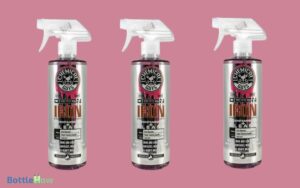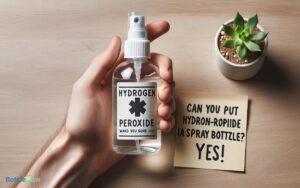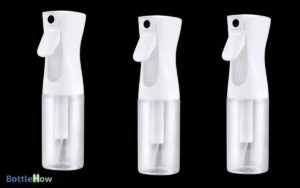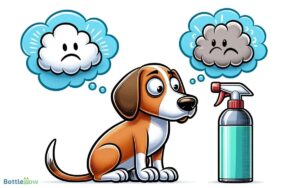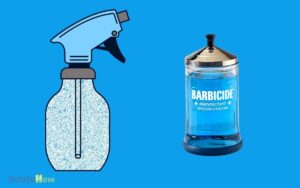How Does a Perfume Spray Bottle Work? Mechanisms Explained
Your perfume spray bottle utilizes a meticulous design to emit fragrance precisely.
When you press the pump, it depresses a chamber which pressurizes the system. This action pulls your perfume through a dip tube, up into the pump mechanism.
Here, the liquid is propelled through a finely tuned nozzle that atomizes the perfume into a light, even spray. This nozzle is essential, as its design determines the distribution, fineness, and pattern of your spray.
Regular maintenance like cleaning the nozzle and checking for leaks guarantees peak performance. By exploring further, you can master the finer details of maintaining your bottle’s functionality.
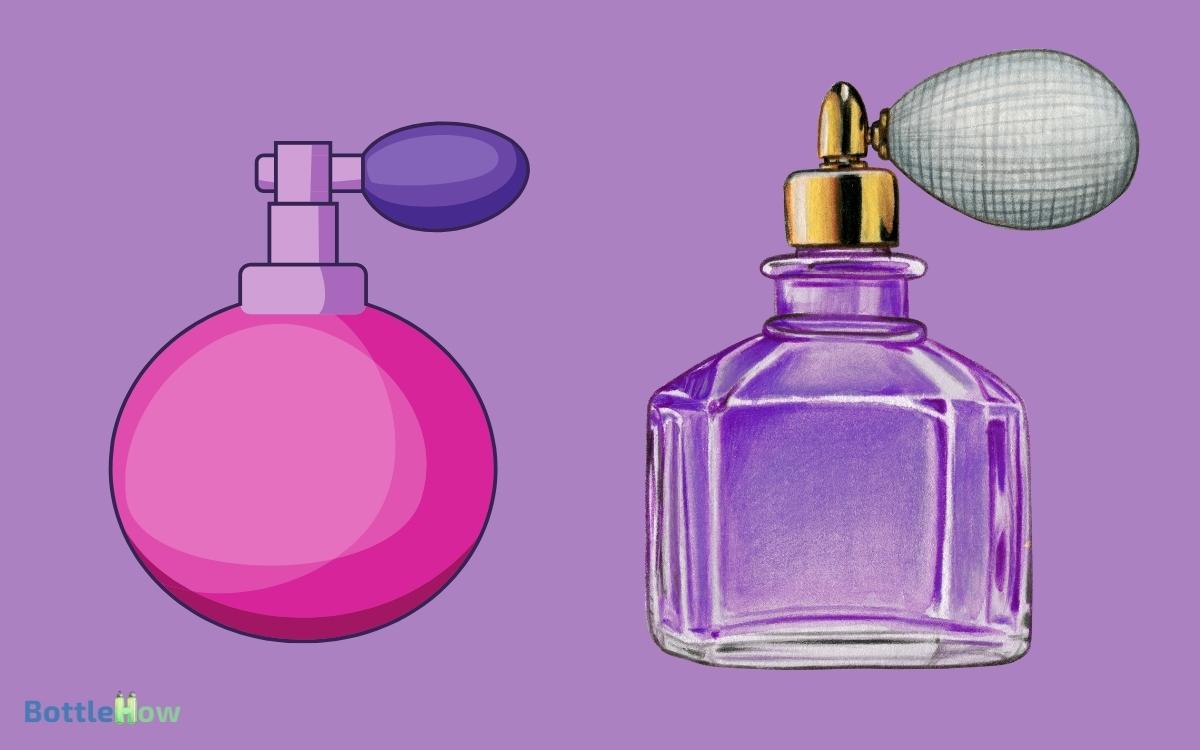
Key Takeaways
The Basics of a Perfume Bottle
A perfume bottle is designed to safeguard and dispense fragrant liquids in a controlled, efficient manner. When you’re serving others by selecting or using these bottles, it’s essential to understand their primary function: protecting the perfume’s integrity and quality.
These containers are meticulously crafted to guarantee that the volatile compounds within the perfume don’t degrade due to exposure to air, light, or temperature fluctuations. This protective role is vital because it directly influences the fragrance’s longevity and efficacy.
Additionally, the design of the bottle must facilitate easy, precise dispensing, allowing for a seamless application experience.
Each element of a perfume bottle’s architecture is strategically implemented to enhance the user’s interaction while maintaining the perfume’s original characteristics.
Components of a Spray Bottle
Understanding the components of a spray bottle will further enhance your ability to select or use these devices effectively.
Here’s a breakdown of the key parts:
| Component | Function | Material Choices |
|---|---|---|
| Reservoir | Holds the perfume liquid | Glass, plastic |
| Dip Tube | Transports liquid from reservoir to the pump | Plastic, silicone |
| Nozzle | Directs and atomizes the liquid into a fine spray | Plastic, metal |
| Trigger Mechanism | Facilitates manual pump action to expel the perfume | Plastic, metal |
Each component is essential for the efficient delivery of perfume. You’ll find that understanding these details not only aids in troubleshooting but also in ensuring top-notch functionality, serving your needs with precision and reliability.
How the Pump Mechanism Works
You’ll find that the pump mechanism in a perfume spray bottle integrates various components which function collectively to facilitate liquid dispersion. When you press the spray part of a perfume bottle, the pump creates a vacuum that draws the liquid upward through a dip tube. This mechanism ensures a fine mist is released, allowing for even distribution of the fragrance. The design of the nozzle also plays a crucial role in controlling the droplet size and spray pattern.
Initially, when you depress the pump, it pressurizes the bottle’s chamber, drawing liquid up through a dip tube.
This action culminates in a fine mist expelled swiftly through the nozzle, enabling efficient and even distribution of the perfume.
Components of Pump Mechanism
At the heart of every perfume spray bottle, the pump mechanism operates through a series of precisely engineered components. These parts function seamlessly to control the flow of liquid within the bottle, ensuring a fine mist is delivered each time you press the actuator.
Understanding these components enhances your ability to maintain and troubleshoot the spray mechanism effectively.
Here are the key components:
- Actuator: This is the button you press. It controls the pump valve to release the perfume.
- Pump Valve: An essential part that opens when the actuator is pressed, allowing perfume to flow toward the nozzle.
- Dip Tube: This tube extends into the perfume liquid, drawing it up when the pump is activated.
Process of Liquid Dispersion
When you press the actuator, the pump mechanism springs into action, drawing perfume up through the dip tube into the valve system. This occurs because the actuator’s depression increases the air pressure in the pump chamber, creating a vacuum that pulls the liquid upward.
As you release the actuator, the spring in the pump forces the piston back to its original position, pushing the perfume through a tiny nozzle. This nozzle, designed to break down the liquid into fine droplets, guarantees a wide and even spray.
The precision of this mechanism allows for efficient and controlled dispersion, maximizing the coverage while minimizing waste. Understanding this process enables you to deliver a consistent, fine mist with each spray, enhancing the user’s experience.
Role of the Nozzle in Spraying
You’ll find that the nozzle’s design is critical for the precise distribution of perfume. Its configuration dictates the spray pattern and droplet size, directly impacting the functionality of the spray mechanism.
Understanding these elements helps you appreciate how modifications in nozzle structure can alter the overall spray performance.
Nozzle Design Essentials
The nozzle in a perfume spray bottle critically determines the dispersion and fineness of the mist.
You need to take into account several technical aspects of nozzle design to guarantee peak performance:
- Orifice Size: The diameter of the nozzle’s opening affects the spray’s particle size. A smaller orifice produces a finer, more delicate mist, enhancing the application experience.
- Shape of the Nozzle: Nozzles can vary in shape, influencing spray pattern and angle. Cone-shaped nozzles, for instance, distribute the perfume over a wider area.
- Material Durability: The material should resist wear from chemical interactions with the perfume and mechanical action during use, ensuring consistent performance over time.
Understanding these elements allows you to better cater to those who seek the perfect perfume application experience.
Spray Mechanism Functionality
Understanding nozzle design lays the groundwork for exploring how spray mechanisms function in perfume bottles. The nozzle’s role is critical; it controls the dispersal of perfume into a fine mist, a process dependent on precise engineering.
Your grasp of this system’s dynamics can greatly enhance the service you provide, ensuring peak functionality and customer satisfaction.
| Component | Function |
|---|---|
| Nozzle Orifice | Regulates the spray’s size and uniformity. |
| Swirl Chamber | Creates a vortex to distribute the liquid. |
| Exit Valve | Controls the release timing and pressure. |
Each component synergizes to deliver the perfume elegantly and efficiently, demonstrating the importance of understanding and maintaining these mechanisms. This knowledge allows you to better serve and support users in achieving the perfect application.
Journey of Perfume Inside the Bottle
When you depress the nozzle of a perfume spray bottle, the mechanism draws liquid up through a tube and forces it out as a fine mist.
Here’s a detailed look at the stages the perfume undergoes:
- Suction Phase: As the nozzle is pressed, a vacuum is created inside the chamber, which lowers the pressure. This difference in pressure propels the perfume upwards through the dip tube.
- Ascent through Dip Tube: The perfume travels up the dip tube, propelled by the pressure differential. The liquid’s movement is steady, ensuring a consistent flow toward the nozzle.
- Arrival and Exit: Upon reaching the top, the liquid is atomized by the nozzle’s design, transforming from a liquid state into a mist, ready for application.
Physics Behind the Spray Function
Exploring the spray function, you’ll find that it relies on the principles of fluid dynamics and pressure differentials to efficiently disperse perfume.
As you press the nozzle, you compress air within the bottle, creating a higher pressure above the liquid perfume. This pressure differential forces the perfume up through a dip tube towards the nozzle.
Here, the liquid accelerates and exits the small opening at high velocity, breaking into a fine mist. The nozzle’s design critically impacts this change. It constricts the fluid flow, increasing the velocity while simultaneously reducing the liquid’s pressure.
This phenomenon, known as Bernoulli’s principle, explains why the perfume atomizes into tiny droplets ideal for even distribution and effective scent dispersion, serving your needs precisely and elegantly.
Types of Spray Bottle Mechanisms
Various mechanisms enable spray bottles to efficiently disperse liquids, each designed to meet specific application requirements. Understanding the diversity of mechanisms will help you serve clients more effectively by selecting the right type for their needs.
Here are three primary types:
- Trigger Sprayers: These are common and allow for a controlled spray pattern. You manually compress a trigger, which activates a pump drawing liquid from the bottle and expelling it through a nozzle.
- Aerosol Sprayers: These utilize compressed gases to atomize the liquid. They deliver a fine mist and consistent application, ideal for seamless coverage.
- Pump Sprayers: Operating via a push-button mechanism, these sprayers use a small cylindrical piston to create pressure that ejects the liquid in a mist form.
Each type offers distinct advantages depending on the desired application specifics.
Maintaining Your Perfume Bottle
Regular maintenance of your perfume spray bottle guarantees peak performance and longevity. To maintain this, you’ll need to adopt precise and consistent practices.
To start with, always keep the nozzle clean to prevent clogging, which can affect the spray quality. Additionally, store your perfume in a cool, dark place to preserve the fragrance’s integrity and prevent chemical degradation.
Here’s a quick guide to help you maintain your perfume bottle effectively:
| Task | Frequency |
|---|---|
| Clean the nozzle | After each refill |
| Check for leaks | Monthly |
| Store away from light | Continuous |
Common Issues and Solutions
Despite regular maintenance, you might still encounter issues with your perfume spray bottle.
Here’s how to troubleshoot common problems:
- Clogged Nozzle: If the spray isn’t emitting, it’s likely the nozzle is clogged. You’ll want to remove the nozzle and soak it in warm water mixed with mild detergent. Use a small brush to meticulously clear any blockage.
- Leaky Seal: Continuous usage can wear out the seal. Inspect the area around the nozzle and the cap for any cracks or looseness. Replacing the seal can secure functionality and prevent perfume wastage.
- Weak Spray: This could indicate a compromised pump mechanism. Check for any damage to the pump. If necessary, replace the pump to maintain a robust and consistent spray.
Conclusion
Now that you’ve navigated the nuances of your nifty nozzle and discovered the dynamics driving your delightful perfume dispenser, maintaining mastery over the mechanism guarantees enduring enjoyment.
Precisely press to prevent problems, and keep components clean to combat clogging.
With this technical understanding, you’re well-equipped to maximize the magical mist, making every spray a perfect punctuation to your personal presentation.
Remember, regular refinement reaps reliable results, securing the sublime scent’s succession.


